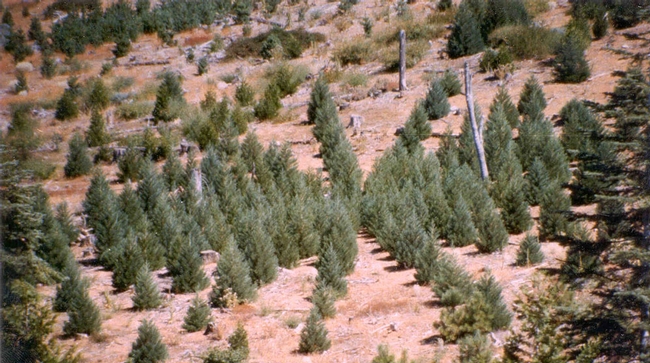Re-posted from UC Berkeley Department of Environmental Science, Policy, and Management.

This image from a Nelder Plot at Blodgett Forest Research Station in the Sierra Nevada mountains is part of a study designed to find out how trees respond to different levels of competition for resources (light, water, and nutrients). The wagon-wheel pattern provides a space-efficient way to experimentally increase tree density as one gets closer to the center of the “spokes.”
The trees in the image are giant sequoia, a species that is particularly sensitive to competition. After only a few years, one can see from the image that trees near the center of the spokes are smaller than trees near the edges where tree density is low.
The study has implications for how foresters manage tree density, depending on various objectives such as wildlife habitat, timber, or carbon sequestration.
This project was initiated by ESPM emeritus John Helms, and involved collaborative efforts from Robert Heald and ESPM faculty Robert York and Kevin O’Hara, who also co-authored the paper.